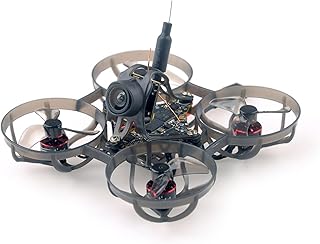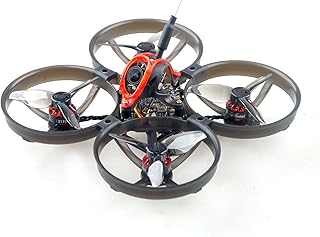The Future of Drone Technology: SPEEDY BEE Drone
The drone industry is rapidly evolving, with companies constantly pushing boundaries and introducing innovative solutions. The SPEEDY BEE drone, a hypothetical example, represents the potential for future drone technology to be faster, more efficient, and capable of tackling complex tasks.
Here's a glimpse into the future of drone technology through the SPEEDY BEE:
1. Hyper-Speed and Agility:
* Advanced Propulsion: The SPEEDY BEE utilizes cutting-edge electric propulsion systems, possibly employing novel technologies like ion propulsion or miniature turbojets for enhanced thrust and efficiency.
* Aerodynamic Design: Sleek and streamlined design with active control surfaces for dynamic maneuverability, allowing it to navigate complex environments at high speeds with precision.
2. Enhanced Intelligence and Automation:
* Real-time Object Recognition and Avoidance: Advanced AI-powered sensors and computer vision algorithms enable the drone to identify and avoid obstacles in real-time, even at high speeds.
* Autonomous Navigation and Routing: Sophisticated navigation systems allow the drone to plan routes and navigate complex environments autonomously, minimizing human intervention and increasing efficiency.
3. Versatility and Adaptability:
* Modular Payload Systems: The SPEEDY BEE features interchangeable payloads, allowing for various applications like package delivery, aerial surveillance, search and rescue, or even high-speed data transfer.
* Environmentally Conscious Design: Built with durable, lightweight materials and incorporating energy-efficient technologies, the drone is designed to minimize environmental impact.
Potential Applications of SPEEDY BEE:
* Emergency Response: Delivering vital medical supplies, evacuating injured individuals, and assessing disaster areas.
* Delivery Services: Rapidly transporting goods, packages, and medical supplies over long distances, revolutionizing logistics.
* Infrastructure Inspection: Performing high-speed inspections of bridges, power lines, and other critical infrastructure, identifying potential issues quickly and efficiently.
* Environmental Monitoring: Conducting rapid aerial surveys of wildlife populations, pollution levels, and other environmental factors.
* Security and Surveillance: Providing real-time surveillance and security patrols in urban environments, disaster zones, or remote areas.
Challenges and Considerations:
* Regulation and Safety: Development of regulatory frameworks for high-speed drones and the implementation of advanced safety measures are crucial for responsible deployment.
* Public Perception: Public concerns about noise, privacy, and potential misuse need to be addressed proactively.
* Infrastructure Requirements: Adapting existing infrastructure and developing new infrastructure, such as charging stations and communication networks, is necessary for widespread adoption.
Conclusion:
The SPEEDY BEE drone represents a glimpse into the future of drone technology, where speed, intelligence, and adaptability converge to enable a wide range of applications. While significant challenges remain, the potential benefits of this technology are vast, promising to revolutionize industries and improve our lives in numerous ways. It's essential to approach this future responsibly, addressing concerns and ensuring ethical and safe integration of these advanced technologies.


